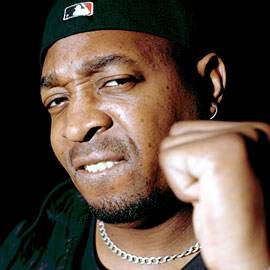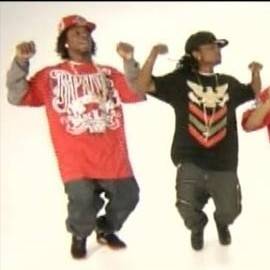 Let’s clear this up. There’s hip hop, and then there’s rap.
Let’s clear this up. There’s hip hop, and then there’s rap.
If you are still reading my article right now I’m assuming you’re either aware of the apparent subtleties so I don’t have to explain the difference between Biggie and Pac to you, but if you’re as interested to step out of your “comfort zone” as you probably should be, I’ll certainly illustrate:
The fact is that rhymes and self-image are key elements of both genres (yes, genre with an ‘s’), but keep in mind that one’s passions and emotions take them down a much different road than ego and swagger. What made Biggie, 2Pac and a few others so great were their abilities to blend rap and hip hop while maintaining a strong sense of self, grace, and composure on the mic.
 The (perhaps cliché) saying “Everything is good in moderation” seems to apply even to formerly feuding rap stars. And feuding is a good word to use here, as we rhyme-spittin’ appreciators can certainly identify with it. Perhaps now more than ever before, lovers of these distinct styles find themselves drawing thin lines between the Lil’ Wayne’s and the Public Enemy’s. Do we stick to the roots, proclaim words of activism, preaching positive vibrations of harmony and connectivity? Or do we hum-drumingly cry out surface-level subject matter as we sip-some-purp-n-lean-wit-it-rock-wit-it-snap-yo-fingaz-while-yo-chain-hang-low-in-da-club?
The (perhaps cliché) saying “Everything is good in moderation” seems to apply even to formerly feuding rap stars. And feuding is a good word to use here, as we rhyme-spittin’ appreciators can certainly identify with it. Perhaps now more than ever before, lovers of these distinct styles find themselves drawing thin lines between the Lil’ Wayne’s and the Public Enemy’s. Do we stick to the roots, proclaim words of activism, preaching positive vibrations of harmony and connectivity? Or do we hum-drumingly cry out surface-level subject matter as we sip-some-purp-n-lean-wit-it-rock-wit-it-snap-yo-fingaz-while-yo-chain-hang-low-in-da-club?
Speaking from the heart here, I figure, “Hell, I love doing both of these things. What’s stopping me from having both?”
You might be thinking something cynical, and I’d argue that this comes from a narrow perspective.
One could even argue that Biggie did more for hip hop than Soulja Boy ever could, but I’d like to see Biggie rise from the dead and show you how to “Superman dat ho” in a dance that even your parents must be aware of by now, all without cursing. Soulja Boy is presently doing what Christopher Wallace practiced prophetically in his (too) short (of) time on Earth, combining classic pop song structure with killer beats and shallow yet entertaining declarations of self-image. On top of that, Soulja Boy even has signature moves to accompany his songs* (Now THAT’s what I call raising the bar: Youtube ‘Crank Dat’ right away if you have been in hiding the past few summers). Mad props.
I guess the “moral” here is this: taste the sweet, and taste the sour. You need both. And If you have been writing off either of these two diverse styles of music, I urge you to stop; there’s always something to be found of interest when exploring anything, and that’s especially true for things you feel you won’t like. Instead, just try to absorb what you can from the best of both worlds. At the very least you will at least know what you don’t like, right? Embrace the crucial differences as defining characteristics and at least you will have utilized an area of your brain in a new way. The best thing you can do is enjoy and respect both types of rhyme vocation for what they are and not try to compare them, as there are no signs of any upcoming freestyle battles between Weezy Baby and Chuck D happening anytime soon.








